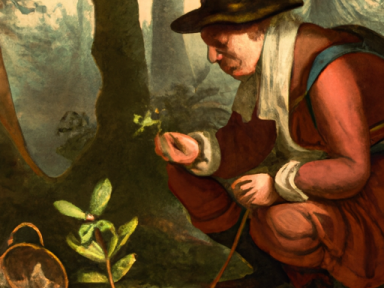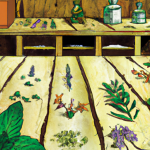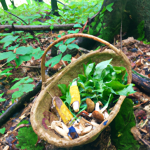
Foraging Safety: Essential Tips for a Successful and Safe Experience
Foraging is a fantastic skill to have in your self-reliance toolkit. Being able to gather edible plants from the wild can provide a valuable supplement to your diet, especially in emergency situations where food resources may be scarce. However, it’s important to remember that foraging is not without its risks. To ensure a safe and successful experience, it is crucial to be aware of the potential hazards and to take the necessary precautions. In this article, we will discuss some essential foraging safety tips to help you navigate the wilderness with confidence.
1. Educate Yourself
Before venturing into the world of foraging, it is critical to educate yourself thoroughly. Familiarize yourself with the types of edible plants that grow in your region and the specific seasons in which they are available. Take the time to learn about the toxic plants that may resemble their edible counterparts. Invest in a reliable field guide, attend foraging workshops, and join local foraging groups to deepen your knowledge.
2. Accurate Identification is Key
Proper identification of edible plants is absolutely essential to avoid any potential dangers. Mistaking a toxic plant for an edible one can have severe consequences. Pay close attention to the physical characteristics of the plant and compare them to your field guide. Familiarize yourself with key identifiers such as leaf shape, color, and pattern, as well as the characteristics of the plant’s flowers and fruits. When in doubt, it is always better to err on the side of caution and leave the plant untouched.
3. Start Slow and Gradually Expand
As a beginner forager, it’s best to start with a few easily recognizable and commonly found edible plants. Master your identification skills with these species before moving on to more challenging ones. By gradually expanding your knowledge and experience, you’ll gain the necessary confidence to correctly identify a wider variety of plants.
4. Location Matters
Choose your foraging locations carefully. Avoid areas that may be contaminated by pollutants or pesticides. Steer clear of plants growing near roadways or industrial sites, as they may have absorbed harmful substances from their surroundings. National parks and protected lands also prohibit gathering, so make sure to check local regulations and seek permission if necessary.
5. Respect the Environment
Foraging should always be done with utmost respect for the environment. Never overharvest from a single area, as this can disrupt the delicate balance of the ecosystem. Only take what you need and leave plenty behind for wildlife and future foragers. Remove any trace of your presence, including trash and footprints, to maintain the pristine beauty of the natural world.
6. Always Be Prepared
Prior to heading out for a foraging expedition, make sure you’re prepared with the right equipment and knowledge. Carry a sturdy container or bag for collecting your harvest, along with gloves, clippers, and a knife for harvesting. Don’t forget to bring an adequate supply of water, a first aid kit, and a charged cell phone for emergencies.
7. Stay Safe from Insects and Wildlife
While foraging, be mindful of the presence of insects and wildlife. Wear appropriate clothing to protect yourself from ticks, mosquitoes, and other biting insects. Be aware of the potential for encounters with snakes or larger animals, and stay vigilant. Familiarize yourself with local wildlife and take necessary precautions to minimize any risk.
8. Avoid Toxic Look-alikes
One of the greatest dangers in foraging is accidentally consuming a toxic plant that resembles an edible one. Be aware of the common look-alikes in your region and study their distinguishing features. For example, know the difference between wild garlic and the poisonous lily of the valley. Always double-check your identification and never consume a plant unless you are completely certain of its edibility.
9. Experiment Safely
When trying a new plant for the first time, it’s wise to start with a small portion to check for any adverse reactions. Some people may have allergies or sensitivities to certain plants, so it’s important to gauge your body’s individual response. Avoid consuming large quantities of a new plant until you are confident in its safety for your personal consumption.
10. Be Mindful of Plant Conservation
Remember that foraging can have an impact on the environment. Some plants may be rare or protected species, so be cautious not to disturb their populations. Avoid harvesting endangered plants and those that are critical for the survival of local wildlife. Always prioritize sustainable foraging practices to ensure the longevity of the plants you rely on.
By following these essential foraging safety tips, you can engage in this valuable skill with confidence and minimize potential risks. Remember, knowledge is power in the world of foraging, so always prioritize your safety and the preservation of our natural resources.



GIPHY App Key not set. Please check settings